
Warfare, past and present.
Read 'Saladin the Strategist': https://t.co/KT9cGzHRIj
More writing: https://t.co/47yApgaler
14 subscribers
How to get URL link on X (Twitter) App

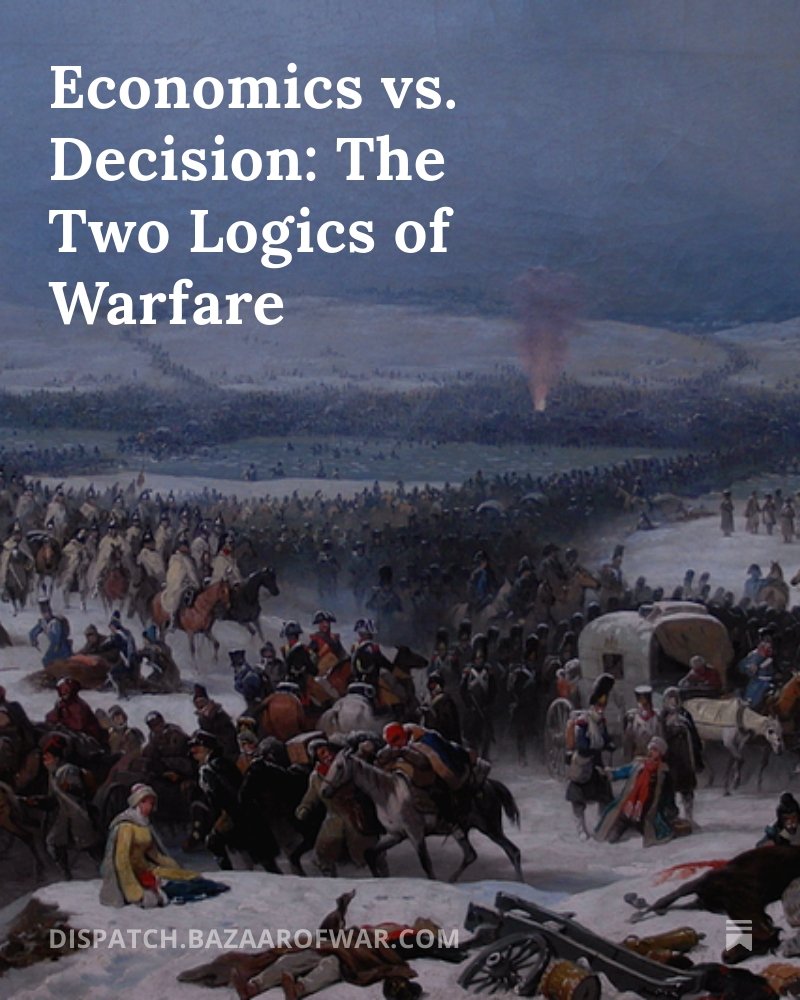
https://twitter.com/bazaarofwar/status/1999132442800603641
 The logic of economics encompasses purely attritional warfare, although it also extends far beyond: warfare by balance sheet, allocating forces to where they can get the best casualty ratios, while defending terrain whose capture might improve the enemy’s ratio.
The logic of economics encompasses purely attritional warfare, although it also extends far beyond: warfare by balance sheet, allocating forces to where they can get the best casualty ratios, while defending terrain whose capture might improve the enemy’s ratio.

 Any good naval base has traditionally had a few key elements: a defensible harbor, a large roadstead for assembling the fleet, and access to deep water. All major naval bases have this: Yokosuka on Tokyo Bay, Southampton on the Solent, Brest and Sevastopol Roadsteads…
Any good naval base has traditionally had a few key elements: a defensible harbor, a large roadstead for assembling the fleet, and access to deep water. All major naval bases have this: Yokosuka on Tokyo Bay, Southampton on the Solent, Brest and Sevastopol Roadsteads… 




https://twitter.com/bazaarofwar/status/1982855201704030261“Small wars” occupy a pretty wide conceptual horizon—from old-school colonial wars to large-scale insurgencies to periodic border skirmishes between large states. Yet in all of these, combat is usually limited to the tactical or lower operational level.
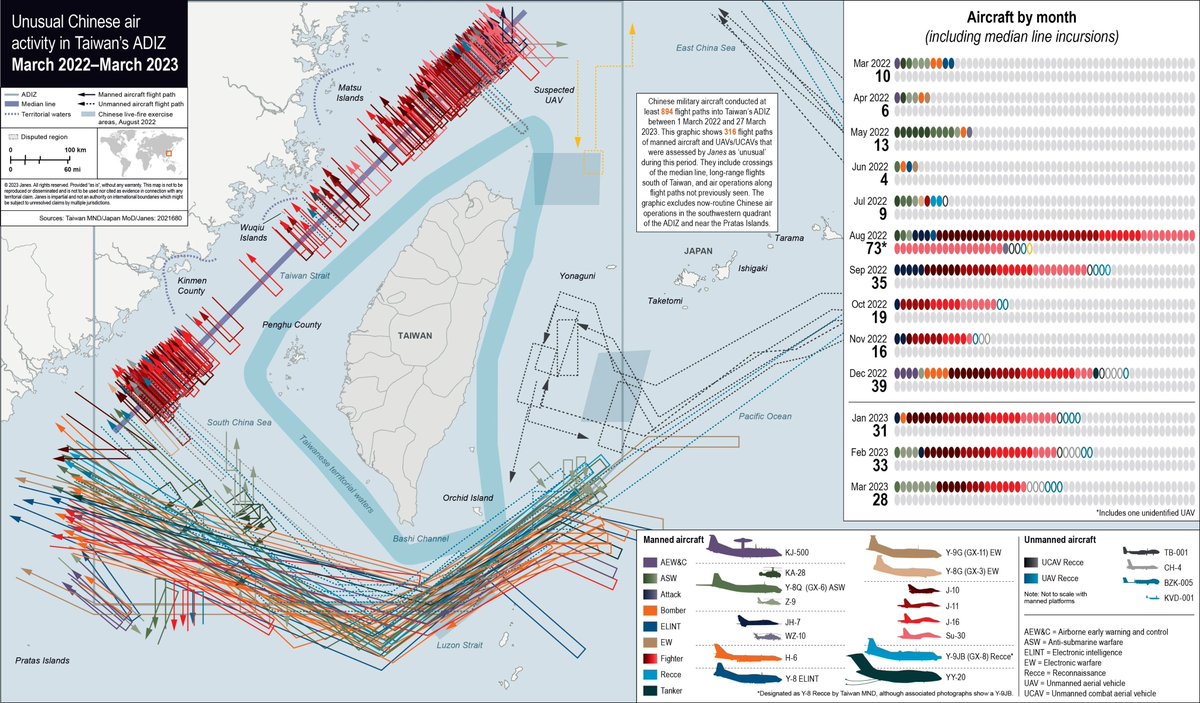
https://twitter.com/bazaarofwar/status/1968771087660937542
 After French naval strength peaked in the 1690s, Britain was able to blunt the threat of an invasion fleet. She quickly gained an absolute advantage in sea power, and land wars consumed too much of France’s resources to actively contest both domains.
After French naval strength peaked in the 1690s, Britain was able to blunt the threat of an invasion fleet. She quickly gained an absolute advantage in sea power, and land wars consumed too much of France’s resources to actively contest both domains.https://x.com/bazaarofwar/status/1904974525025878342

https://twitter.com/bazaarofwar/status/1961178103927246987
 A basic element of combined arms is their simultaneous offensive and defensive function. Hitting an objective in several ways increases the odds of success, while making it harder for the enemy to hit vulnerable troops at the point of attack—an overwhelming pulse of combat power.
A basic element of combined arms is their simultaneous offensive and defensive function. Hitting an objective in several ways increases the odds of success, while making it harder for the enemy to hit vulnerable troops at the point of attack—an overwhelming pulse of combat power. 

https://twitter.com/bazaarofwar/status/1959626226554823064
 Saltpeter provides the oxygen for rapid combustion, giving gunpowder its bang. Early formulas were more fast-burning incendiaries than explosives, with pitch or oil mixed in, until the optimal ratio was discovered: 75% saltpeter, 15% charcoal, 10% sulfur
Saltpeter provides the oxygen for rapid combustion, giving gunpowder its bang. Early formulas were more fast-burning incendiaries than explosives, with pitch or oil mixed in, until the optimal ratio was discovered: 75% saltpeter, 15% charcoal, 10% sulfurhttps://x.com/bazaarofwar/status/1954653554746294366


 The first two years of the War of 1812 overturned expectations: on land, the American invasion of Canada made no headway, but at sea her privateers & frigates had great success—the Napoleonic Wars were raging, and the Royal Navy could not spare the effort.
The first two years of the War of 1812 overturned expectations: on land, the American invasion of Canada made no headway, but at sea her privateers & frigates had great success—the Napoleonic Wars were raging, and the Royal Navy could not spare the effort.https://x.com/bazaarofwar/status/1864019819533578748

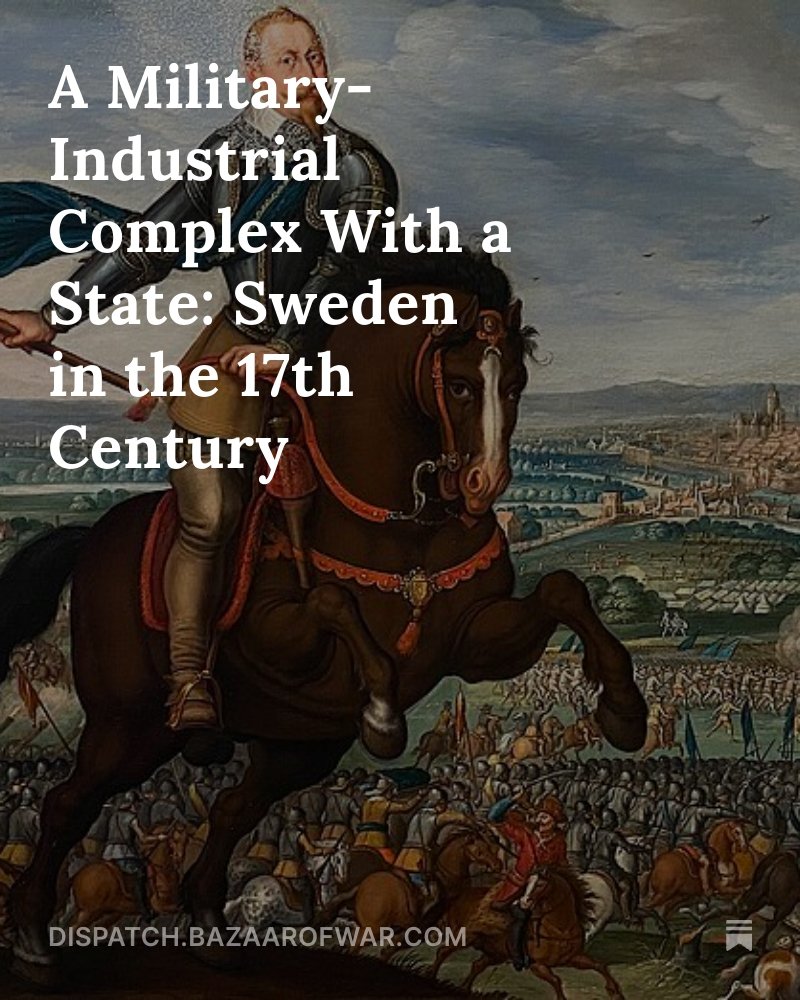
https://twitter.com/bazaarofwar/status/1959263224206860351
 Sweden's disadvantages were partly offset by some critical natural resources. Much of the crown’s revenues came from raw material exports: iron, timber, naval stores, and above all copper.
Sweden's disadvantages were partly offset by some critical natural resources. Much of the crown’s revenues came from raw material exports: iron, timber, naval stores, and above all copper.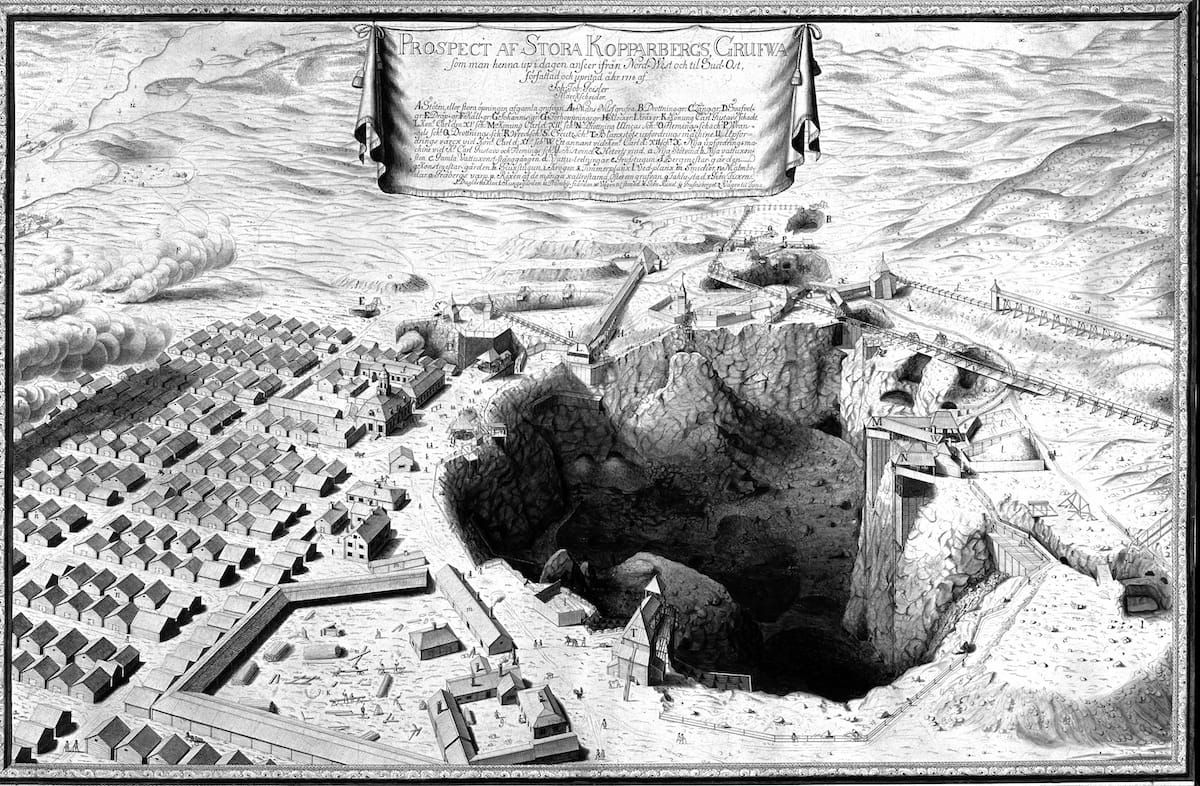

https://twitter.com/bazaarofwar/status/1955703103237296168Western writers began seriously recording military knowledge only a little before the Chinese developed countermarch musketry (although at first much of this was more humanists’ naively searching for classical precedence than practical techniques: )dispatch.bazaarofwar.com/p/paperback-ed…

https://twitter.com/bazaarofwar/status/1954641007909179609
 Andrade takes seriously the hypothesis that endemic warfare among semi-stable states is what drove European military advances, and applies that model to China.
Andrade takes seriously the hypothesis that endemic warfare among semi-stable states is what drove European military advances, and applies that model to China.

https://twitter.com/bazaarofwar/status/1925624819963314270
 Both sides used mounted units extensively for scouting, a complement to aerial reconnaissance—it was Turkish cavalry that spotted the Greek flanking maneuver at the Sakarya, allowing them to reposition forces in time for the battle.
Both sides used mounted units extensively for scouting, a complement to aerial reconnaissance—it was Turkish cavalry that spotted the Greek flanking maneuver at the Sakarya, allowing them to reposition forces in time for the battle. 

https://twitter.com/bazaarofwar/status/1906386941349658879
 In the months after Hattin, Saladin exploited his victory by sweeping up the towns and castles of the Kingdom, including Jerusalem itself.
In the months after Hattin, Saladin exploited his victory by sweeping up the towns and castles of the Kingdom, including Jerusalem itself.

https://twitter.com/bazaarofwar/status/1888264754336305595
 The WSS was fought by two blocs:
The WSS was fought by two blocs:https://x.com/bazaarofwar/status/1880649298905645233


https://twitter.com/bazaarofwar/status/1879974937970241592

 1. The Franco-Dutch War (1672-78) & War of the Polish Succession (1733-35)
1. The Franco-Dutch War (1672-78) & War of the Polish Succession (1733-35)


https://twitter.com/bazaarofwar/status/1879972004293669175
 In the American market, the two most popular topics by far are WWII and the Civil War. The reasons are obvious: the scale, personal connection, US involvement, etc. But there's another reason they continue to draw more scholarly and professional military attention...
In the American market, the two most popular topics by far are WWII and the Civil War. The reasons are obvious: the scale, personal connection, US involvement, etc. But there's another reason they continue to draw more scholarly and professional military attention...

https://twitter.com/bazaarofwar/status/1878668176101368295
 Every Venetian army was accompanied by two officers called provveditori. This is sometimes translated as “commissioner” or “commissary”, as they oversaw army administration of the army. But they also had a political and strategic role.
Every Venetian army was accompanied by two officers called provveditori. This is sometimes translated as “commissioner” or “commissary”, as they oversaw army administration of the army. But they also had a political and strategic role.

 Francesco Maria della Rovere, Duke of Urbino and an experienced condottiere, had just been contracted as captain-general of the Republic’s armies. While he was in Venice that spring to celebrate his confirmation, he was asked about the military situation in Europe.
Francesco Maria della Rovere, Duke of Urbino and an experienced condottiere, had just been contracted as captain-general of the Republic’s armies. While he was in Venice that spring to celebrate his confirmation, he was asked about the military situation in Europe. 


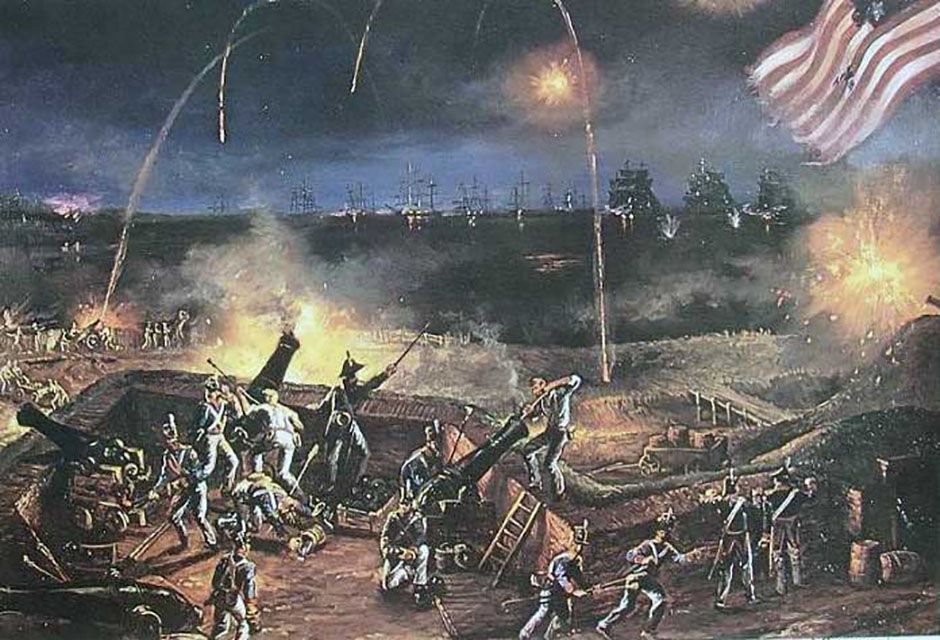
https://twitter.com/bazaarofwar/status/1862670041365278925
 A funny confusion you sometimes see around the phrase “war as an extension of politics” is when people think “politics” refers to domestic elections, not statecraft.
A funny confusion you sometimes see around the phrase “war as an extension of politics” is when people think “politics” refers to domestic elections, not statecraft.
 Leggiere’s argument is that Napoleon became fixated on an initial “master plan” for the campaign, and continued to pursue it long after the situation changed, detracting from his usual strategy of directly targeting the main enemy army.
Leggiere’s argument is that Napoleon became fixated on an initial “master plan” for the campaign, and continued to pursue it long after the situation changed, detracting from his usual strategy of directly targeting the main enemy army.
 On 25 June 1950, ten infantry divisions and an armored division of the Korean People’s Army crossed the 38th Parallel. They quickly overwhelmed the unprepared South Koreans and drove south. The US 21st Division, sent over from Japan, was overrun in the first weeks of July.
On 25 June 1950, ten infantry divisions and an armored division of the Korean People’s Army crossed the 38th Parallel. They quickly overwhelmed the unprepared South Koreans and drove south. The US 21st Division, sent over from Japan, was overrun in the first weeks of July. 